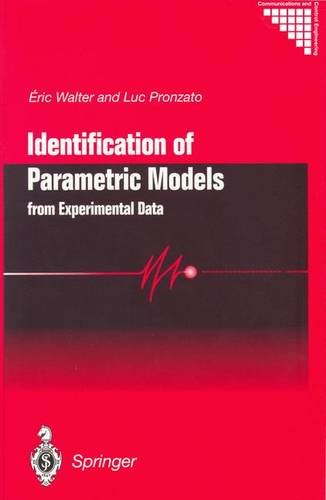Identification of parametric models: from experimental data book download
Par benton jason le lundi, juin 6 2016, 05:51 - Lien permanent
Identification of parametric models: from experimental data. Walter E., Pronzato L.

Identification.of.parametric.models.from.experimental.data.pdf
ISBN: 3540761195,9783540761198 | 428 pages | 11 Mb

Identification of parametric models: from experimental data Walter E., Pronzato L.
Publisher: Springer
In many cases the location of NEP- and PEP-promoters were not experimentally known and were identified de novo in our analyses of multiple alignments of relevant leader regions as described in [3]. Adjusted R^2 results in more parsimonious models that admit new variables only if the improvement in fit is larger than the penalty, which improves the ultimate goal of out-of-sample prediction. We also discuss the application of time-lagged autoregressive AR models to identify TDE genes as well as hidden Markov models (HMM) to classify different expression patterns by posterior probabilities of latent states. (Submitted by Santiago Perez); Bayesian ( Submitted by Michael Malak); Design of Experiments; EM Algorithm; Ensemble Methods; Factor Analysis: used as a variable reduction technique to identify groups of clustered variables. The model advocates engaging multiple. One of the main topics in the development of quantitative structure-property relationship (QSPR) predictive models is the identification of the subset of variables that represent the structure of a molecule and which are predictors for a given property. Bayes factors allow the comparison of non-nested models (such as the non-parametric Bayesian skyline plot vs. QSPR/QSAR methods are widely used for prediction and their goal is to relate molecular descriptors, from molecular structure, with experimental chemical, physical and/or biological properties by means of data-mining methods [6-10] . The Cipp Model for Evaluation by Daniel l. To address this issue, we analyze a well-defined signaling module for Myc regulation using a kinetic model constrained by experimental data and observations. Identification of Parametric Models: from Experimental Data. While evaluators must control the evaluation process to. The maximum clade credibility phylogenetic tree recovered under one of the best-fit models (exponential growth strict-clock) identified using BEAST Almost identical results were obtained under the constant population size strict-clock model .. A nontrivial property of Model 2 is its ability to estimate unknown parameters, e.g., binding attempt intensities, such that transcription levels are predicted within experimental error for virtually all relevant experimental data.